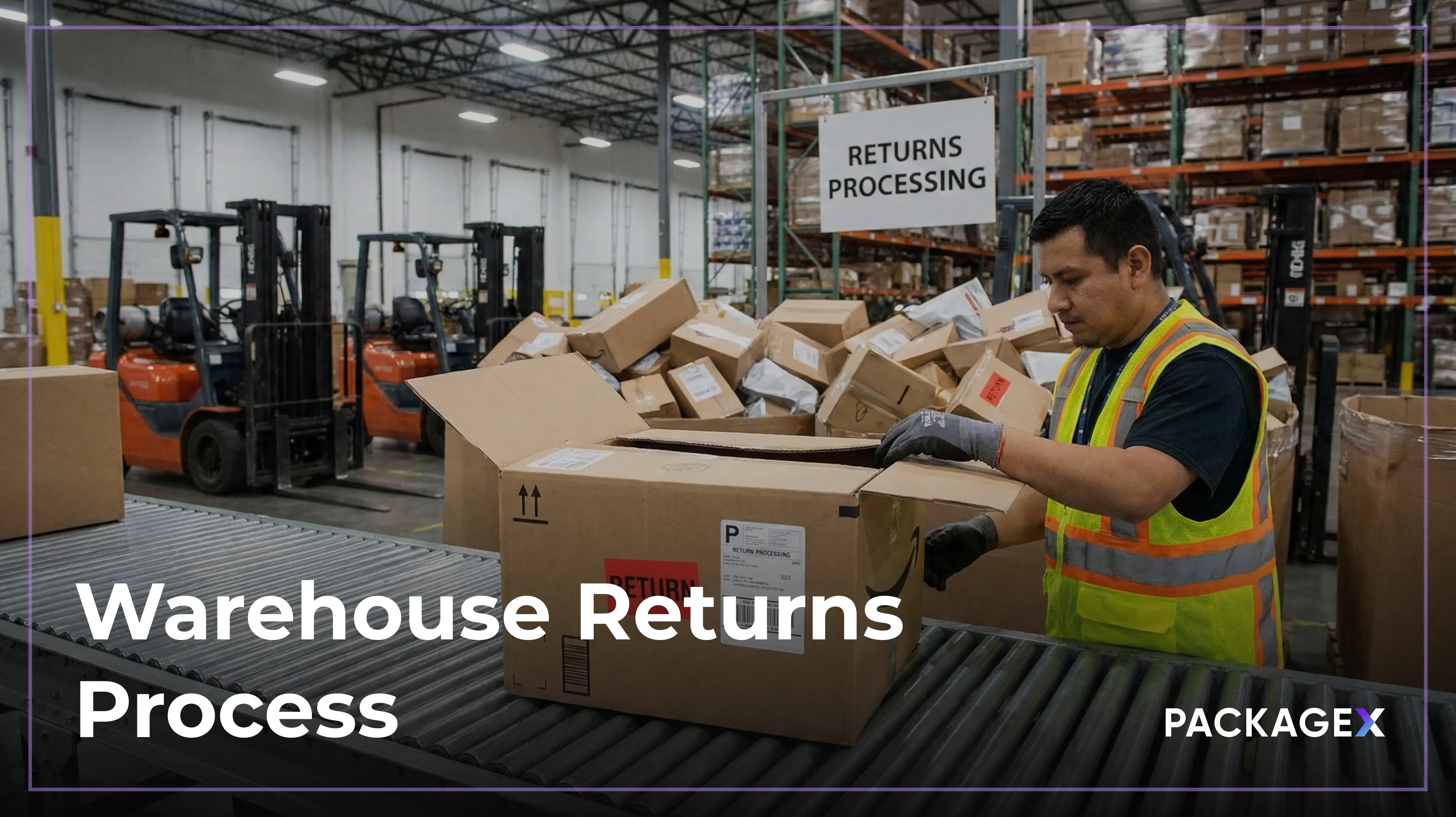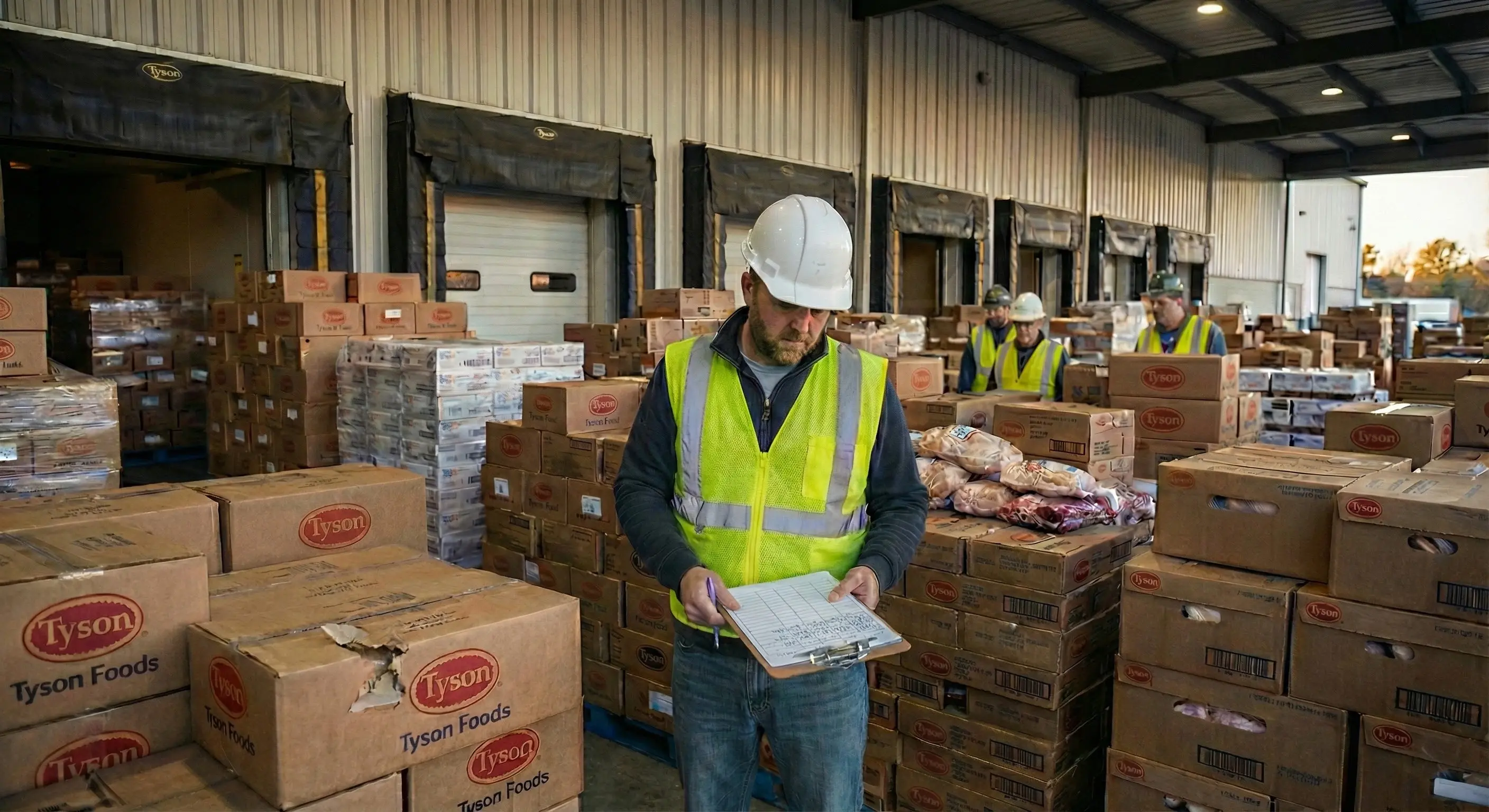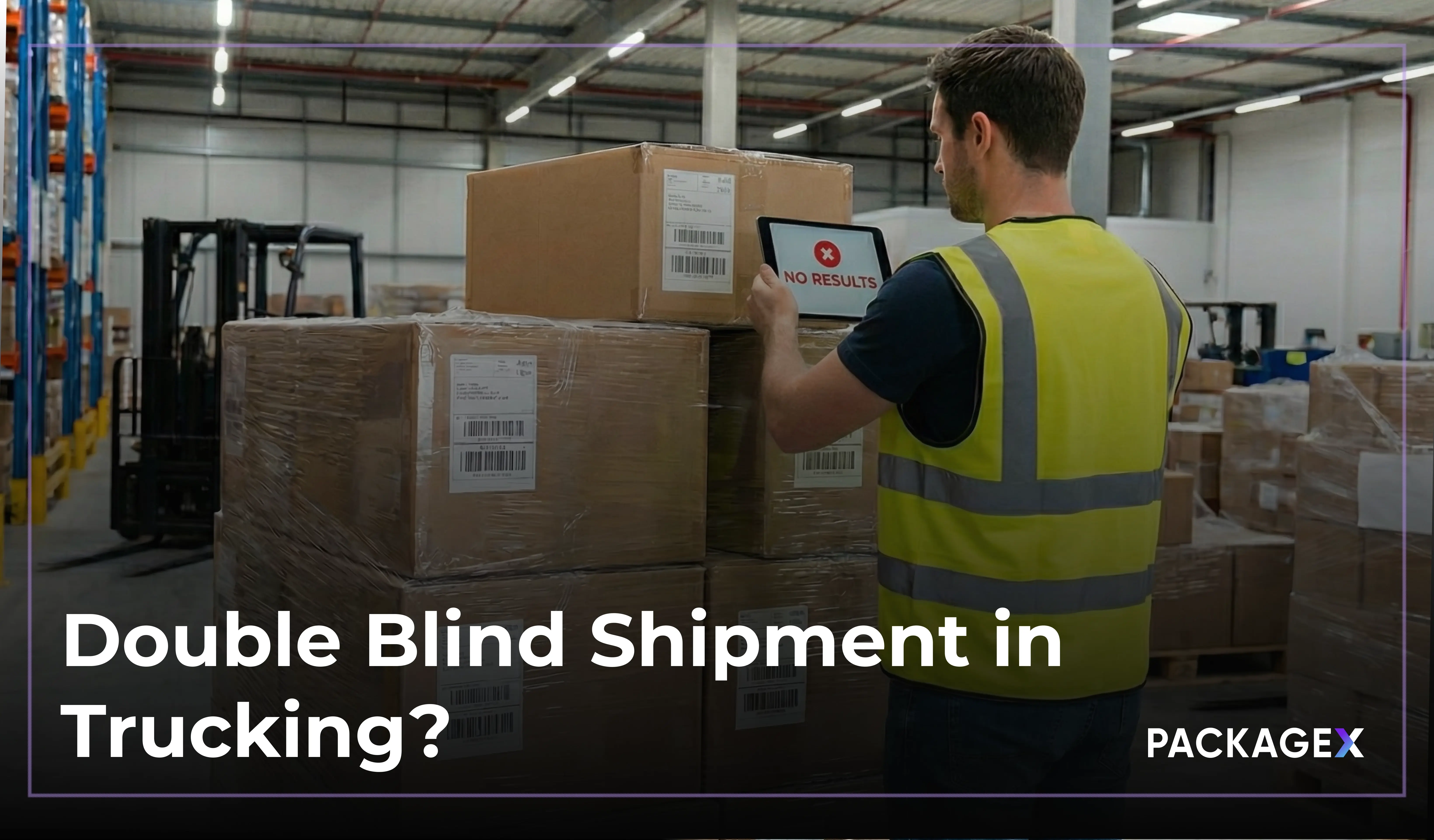How does a product move from a manufacturing plant to your doorstep within 24 hours?
The answer lies in distribution logistics. A key function that connects production to delivery with precision and speed.
However, it's not always that simple. Every day, the majority of companies deal with issues including missing delivery, inaccurate inventory reports, and rising transportation expenses. The primary causes of this problem are outdated procedures and a lack of real-time supply chain visibility.
According to a McKinsey 2024 analysis, just 60% of companies have complete insight into their tier-one suppliers, and disruptions currently take an average of two weeks to fix. It is far more than what is allowed by operational cycles.
Without reliable distribution systems, costs go up, and customer satisfaction drops.
This blog offers an introduction to distribution logistics, exploring how smarter, connected tools and technology can help businesses overcome these common hurdles and deliver faster, smarter, and more cost-effective logistics operations.
What Is Distribution Logistics?
Distribution logistics refers to the process of managing the movement of goods from production facilities to end customers. This critical part of the supply chain ensures that products are delivered efficiently and cost-effectively.
A standard building logistics operation involves the storage, processing, and transportation of both raw materials and finished goods to different locations. The importance of distribution logistics has never been greater than now due to the increasing demand from customers for quicker deliveries.
Profitability is directly impacted by effective distribution logistics since they lower expenses related to delays, inventory, and transportation.
Industry data indicates that businesses can cut delivery times by at least 10% and save logistics expenses by up to 15% by streamlining their distribution procedures.
Because precise and timely delivery are essential to preserving a competitive edge in today's market, this not only increases operational efficiency but also improves customer happiness.
Transportation, Distribution, and Logistics Explained
Transportation, distribution, and logistics form the backbone of supply chain movement. Each plays a distinct yet connected role.
- Transportation refers to the movement of goods via road, rail, sea, or air.
- Distribution focuses on getting products from storage facilities to the end user.
- Logistics covers the overall planning, coordination, and execution of these flows.
So, what is transportation distribution and logistics when seen as a whole? It’s the combined effort that ensures products move efficiently from manufacturing to the final point of delivery.
According to the U.S. Bureau of Labor Statistics, logistic operations are projected to grow 18% by 2032. Tech-driven solutions bring these functions under one digital platform. That helps teams work faster and smarter.
That’s what transportation distribution and logistics mean for businesses today. Less friction, more control, and a smarter way to deliver.
Core Functions of Logistics and Distribution
Efficient logistics and distribution are at the core of moving products from storage to customers without delays or extra costs.
At its core, logistics distribution involves managing inventory, processing orders, packaging, and transportation. Each of these steps influences delivery speed and accuracy. When one part of this chain slows down, the ripple effect can lead to lost revenue and frustrated customers.
According to Industry reports, companies that have successfully implemented AI-driven supply chain solutions have achieved significant improvements. Logistics costs reduced by 15%, inventory levels decreased by 35%, and service levels were enhanced by 65%.
Distribution and logistics management nowadays completely depends on automation and real-time coordination. Technologies such as Warehouse Management Systems (WMS), Transportation Management Systems (TMS), and AI-powered platforms like Visual Logistics Management Systems (VLMS) introduce visibility and control to each interface.
More advanced logistics and distribution management help businesses to avoid stock-outs or overstocking, cut waste, and meet client demands. It also becomes easier to monitor performance, as metrics such as order accuracy, delivery time, and fulfilment rate illustrate how well a company manages logistics distribution.
By integrating systems and reducing manual effort, companies can stay competitive in an environment where speed, consistency, and visibility are important for everyone.
Warehousing in Distribution Logistics
Warehousing plays an undeniable role in how fast, accurate, and cost-effective a distribution network performs. As goods move from suppliers to end customers, the warehouse becomes the core facility where storage, sorting, and fulfillment happen in sync with demand.
In a recent survey by Supply Chain Digital, 77% of supply chain leaders said they are increasing investment in logistics warehousing and distribution to improve speed and visibility.
A modern distribution logistics warehouse does more than hold inventory; it acts as a control point for decision-making, especially when paired with intelligent software. With tools like real-time inventory visibility, AI scanning, and digital sorting, logistics and distribution centers can reduce errors and cut handling time significantly. These kinds of features, offered by PackageX, help create a clear flow from warehouse to shipment.
Centralized vs. Decentralized Warehousing
The way a company sets up its logistics, warehousing and distribution network depends on various factors like speed, scale, and location.
In a centralized logistics distribution center, inventory is stored at one main location, which helps maintain better control and reduce overhead costs. This setup is often used by companies that ship nationwide but don’t require ultra-fast delivery.
Decentralised logistics and distribution facilities, on the other hand, locate inventory near important markets. This allows for more flexibility and quicker deliveries, but it may also result in increased operational costs. This concept is frequently used by retailers, e-commerce enterprises, and healthcare organisations.
Choosing the right warehousing structure depends on how businesses balance cost, delivery times, and customer expectations.
Types of Distribution Logistics:
Improving operational efficiency requires an understanding of the various distribution logistics. These different types cater to individual requirements within the logistics distribution system. Which aids businesses in handling inventory, saving costs, and increasing delivery time.
Here are the main types of distribution logistics used by businesses today:
1. Outbound Logistics
This involves the transportation of finished products from the company to the consumer. It's crucial for distribution logistics firms in retail and e-commerce to make deliveries on time and fulfill customer orders.
2. Inbound Logistics
Inbound logistics is all about the movement of raw materials to a company for production. It's important for manufacturing industries, such as automotive or food processing, to have an effective supply chain.
3. Direct Shipping
In direct shipping, goods are shipped directly from the manufacturer to the consumer, cutting out middlemen. It is a successful model for companies seeking to lower inventory and delivery costs. This method is widely employed in e-commerce.
4. Drop Shipping
Those using drop shipping do not handle the products directly. Orders are instead shipped by third-party suppliers, keeping inventory costs low and making it a favored model for e-commerce firms.
5. Indirect Distribution
This specific strategy type employs intermediaries that help provide goods to final consumers, such as wholesalers or distributors. It is widely used in industries such as auto production and pharmaceuticals.
PackageX offers a seamless solution for companies looking to enhance their distribution operations. PackageX assists distribution logistics businesses in streamlining operations, enhancing workflows, and delivering products more effectively by integrating automation and real-time tracking
Managing Distribution and Logistics Operations:
Effective distribution and logistics management are critical to achieving optimal operations and sustaining a competitive advantage. Companies monitor important performance indicators (KPIs) such as delivery time, fill rate, and cost per shipment in order to achieve a smooth logistics flow and timely delivery.
As per studies, companies employing performance monitoring systems are able to trim logistics costs by as much as 10% while enhancing service levels.
PackageX's logistics management platform for distribution simplifies operations by providing a single dashboard that aggregates real-time information across the entire supply chain. This enables companies to track inventory, orders, and shipments easily, resulting in faster decision-making.
Logistics in distribution management is evolving, with tech playing an increasingly important role in logistics and distribution services. With PackageX’s automation and real-time insights, logistics teams can address potential issues before they arise, making coordination more proactive and ensuring consistent performance across all channels.
By integrating technology with logistics management, companies can optimize their operations and stay ahead of the competition.
Disposal Logistics
A crucial component in modern supply chains is reverse logistics, often known as disposal logistics. It helps businesses effectively handle product lifecycle issues by addressing the return, recall, and recycling processes.
Businesses are now increasingly focused on reducing waste and improving their reverse logistics procedures as sustainability becomes a primary priority.
Studies show that nearly 90% of businesses consider sustainability in their logistics operations.
PackageX offers a seamless solution by integrating digital workflows that streamline returns and recycling processes. This ensures efficiency and reduces operational costs in disposal logistics.
Inside a Distribution Logistics Center
Walk through a distribution logistics warehouse, and it’s clear how far operations have come. The days of manual checklists and delayed updates are fading.
Now, barcode scanners, digital receiving tools, and automated workflows drive efficiency. A well-run logistics distribution center tracks every movement, from inbound pallets to final outbound parcels.
With software like PackageX, teams monitor it all in real time. Managers rely on connected systems to reduce delays and cut down fulfillment errors. Some warehouses report a 30–50% boost in processing speed after adopting smarter systems. A modern distribution center logistics setup is the backbone of any business.
Why Choose PackageX for Smarter Logistics and Distribution?
If you're asking what logistics and distribution without clear answers from your current systems you're not alone.
The majority of businesses suffer from poor visibility, inventory inconsistencies, and delays. A single logistics platform is more crucial than ever as global supply chains are becoming more technologically advanced.
PackageX offers tools to expedite order processing, simplify processes, and save expenses without adding unnecessary complexity. Whether you're looking to refine logistics distribution or improve fulfillment processes, PackageX supports it all with automation, smart data, and real-time tracking.
When you’re ready to rethink what is distribution and logistics, PackageX is ready to deliver.




